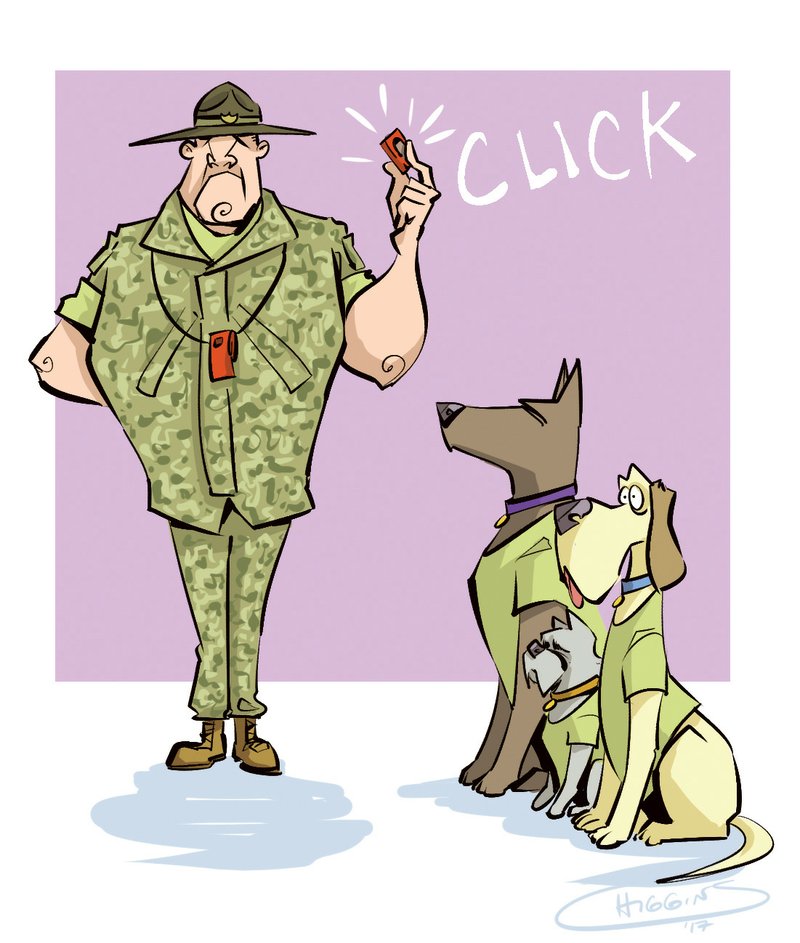I took my dog out to the dog park recently. While she ran around with some dogs, I listened to the other people talking about kinds of dog training. I don't remember most of it, but am interested in knowing more. I'm going to enroll my dog in an obedience class, but anything you can tell me about training now will be appreciated.
When thinking about teaching your dog the basics of canine good behavior such as to sit or stay on cue, it's helpful to understand that you aren't really teaching your dog new behaviors, professional trainer Pat Miller points out in Do Over Dogs: Give Your Dog a Second Chance for a First Class Life.
Dogs know how to sit, lie down and come to you. What you want to do is teach them to do these things on your terms. In a nutshell, training is conditioning a dog to consistently and reliably give you specific behaviors when you ask for them.
Most professional dog trainers and behaviorists rely on the philosophy of positive reinforcement or reward-based training. With these, dogs are motivated to learn when they understand that something good -- a food treat, play time, petting, cooing and praise -- will happen when they give their owners a desired behavior.
Dog owners also need to know that positive training approaches contain a nonreward component that may be confounding at first. Miller explains, for example, that when a dog jumps on his owner, the owner can unknowingly reinforce or reward the behavior simply by responding to it. Telling the dog to stop, pushing him away or even making eye contact will all be seen by the dog as good things. After all, a dog wants his owner's attention so he responds to all these reactions as rewards so he keeps jumping.
The nonreward component requires that an owner remove the positive reinforcement supplied by his reactions. Without the reinforcement, the dog won't be motivated to continue. When the dog jumps up on him an owner needs to turn away and ignore the dog, Miller says. Every time the dog jumps, the owner turns and steps away. The idea is that the dog will get frustrated and give up.
The keys to training success are to find out what motivates your dog as well as determine the type of training approach or philosophy with which you're most comfortable. When you take your dog to an obedience training class, chances are the instructor will use one or a combination of approaches. Even if the trainer relies primarily on a single method, he'll likely explain some of the others. If you decide you prefer one approach, you can then check into classes that focus on it specifically.
The April issue of Your Dog offers a rundown of common training approaches, among them clicker training, the magnet method and capture method.
• Clicker training treats and rewards, but you also need a small metal device that makes a clicking noise. You can buy one for a couple of dollars or less at pet supply stores. Before training with the clicker, you must "load the clicker" by giving the dog treats every time you click it. He hears the clicker, he gets a treat. Once he makes the connection between the sound and the treat, then you begin using the clicker to mark the behavior you want. When he sits, you click and give him a treat. The next step involves adding a voice cue. After the dog learns to associate the voice cue with the click and treat, you phase out the clicker.
• The magnet method means using a food treat as a magnet or lure. When training a dog to sit, you would hold a treat in front of the dog's nose, then slowly raise the treat upward and over his head. The dog's nose naturally follows the treat; as his head goes up, his bottom goes down. As soon as his bottom hits the floor, you say, "Sit!" and give him the treat. Do this often and the dog will associate the treat with the word and the behavior.
• The capture method relies on the expectation that your dog is going to do what you want naturally so you watch and reward accordingly. Take sitting. He's going to sit on his own so when he does, you capture the behavior by giving him the cue -- Sit! -- then reward him for it. This means you have to be vigilant and remember to capture the behavior.
Keep an open mind and be aware that not all methods work for all dogs. You may have to mix and match techniques to fit your dog's temperament and personality. But knowing you have more than one tool in your training toolbox should give you confidence.
Family on 03/29/2017
